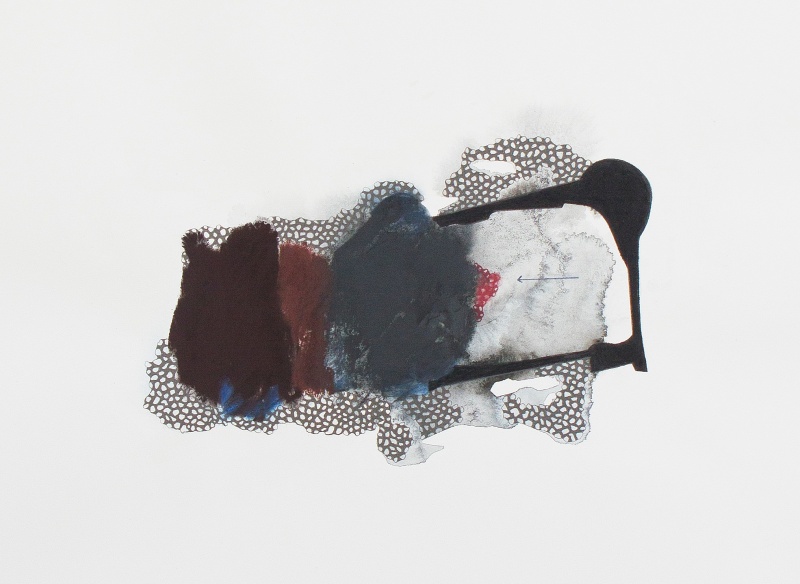
Anjum Singh’s autobiographical exhibition I Am Still Here at Talwar Gallery in New Delhi, has easily been one of the most anticipated exhibitions of 2019. To the delight of many, Singh declared her return to the global art scene after her shocking cancer diagnosis in 2014. As verifiable Indian art royalty, Singh, the only child of contemporary painters Arpita Singh and Paramjit Singh, is often regarded as a protégé of sorts - the living culmination of her parent’s talents mixed with the bold style that is quintessentially her own.
The title of the exhibition I Am Still Here, rings as a definitive declaration that pierces through the continuous humming of the ever buzzing art world. In an environment where attention spans are short and ‘cancelled culture’ is prevalent, Singh tells us immediately through her title that she has no intention of fading away as so many morbid spectators have prophesized. Given all the drama and hype, you can imagine my excitement when I first heard that the Queen of contemporary Indian art was preparing to reclaim her throne; and the swell of pride many Indian’s felt, on the whole, hearing of her resilience.
For context, it’s worth mentioning that while Singh was formally diagnosed in 2014, her last exhibition. Masquerade was actually in 2015, at the Talwar Gallery’s New York City location. This was a particularly magnetic exhibition, with the namesake painting Masquerade and I Look Like That Too, undoubtedly claiming the top spots for standout pieces. Their bold use of saturated pink, machine-like details, and closely spaced black dots made the works not only ‘Instagrammable’ but inherently unique amongst the other works in the exhibition. So why is this relevant? Well, as I was vibrating with excitement to see what Singh had dreamed up for us, I was pleasantly greeted by the same visual language that began in Masquerade.
Like Masquerade, the exhibition is not a homogenous mass of stylistic similarities but instead reads like a mosaic that builds on a previously employed vocabulary. Specifically, Singh’s practical use of ink and watercolour, the prominent use of black and blue hues, the audaciously fluorescent pink, and the installations comprised of several small-scale works meant to be read as a collective. Clearly, the level of introspection, the shift of Singh’s vantage point inward that began in 2015, has only intensified as her health journey progressed - an assertion reinforced by installations like Remarkable Unremarkable which incorporates pieces produced from 2015-2018.
An unsettling sense of calm radiates from the exhibition, with every piece reverently placed in a pool of warm light - presented with the dignity and solemnity usually reserved for religious icons or ancient manuscripts. In a way, I Am Still Here functions as a manuscript of sorts, a coded map tracking Singh’s harrowing journey as the caretaker of her suffering body. Formerly known for her focus on the external form, Singh’s gaze has turned sharply inwards with an acute focus on the inner workings of the human body; on its majesty and its fallibility. Inspired by her practical medical experiences (i.e. blood tests, reports, various cancer treatments etc.) Singh plunges us headfirst with her into the world hidden inside our own - the vast and infinitely complicated universe which exists, simultaneously, within us and apart from us.
Playing across the entire body of work is Singh’s awareness regarding the duality of her chosen subject. For me, there is always a sense that Singh is cognisant of the challenge her creations pose to the viewer - which makes her omnipresence a crucial element of the challenge itself. Each image betrays raw human emotion, however tightly restrained, that intermingles delicately with the clinical subject matter of a scalpel, blood samples, cell compositions and the anatomical heart. It is perhaps Singh’s rendering of the anatomical heart, specifically in Broken, which most clearly demonstrates her existentialist double-entendre. Singh shows us the heart (her heart?), a red/pink form that pulsates with life and colour. As our eye glides to the right, we find the once animated heart black and listless and are further confronted with two increasingly fractured versions. The once teeming heart has been obliterated.
Singh’s seemingly sequential narrative in Broken can easily be understood as a metaphor for the downward trajectory of an ailing body, a simple reference to physical decay. However, it could just as readily be interpreted as a metaphor for the loss of hope and mental anguish a patient can experience during a prolonged illness. Is Singh chronicling physical pain or emotional pain? Or, is she implying that physical pain inevitably breeds emotional pain? I suspect both.
Generally speaking, I found Singh’s return to centre stage to be less provocative than I had initially anticipated. Instead, to her benefit, Singh presented us with a much more grounded exhibition - one that whispers of quiet strength and a steady resilience. By allowing the natural progression of her established canon to fuse with the evolution of her health odyssey, Singh has given us, the viewer, the gift of seeing ourselves for what we are. All humans and all machines. Magic meeting medicine. It was not the triumphant battle cry many expected, but it was unquestionably the heartening hymn we needed.
-Maya Asha